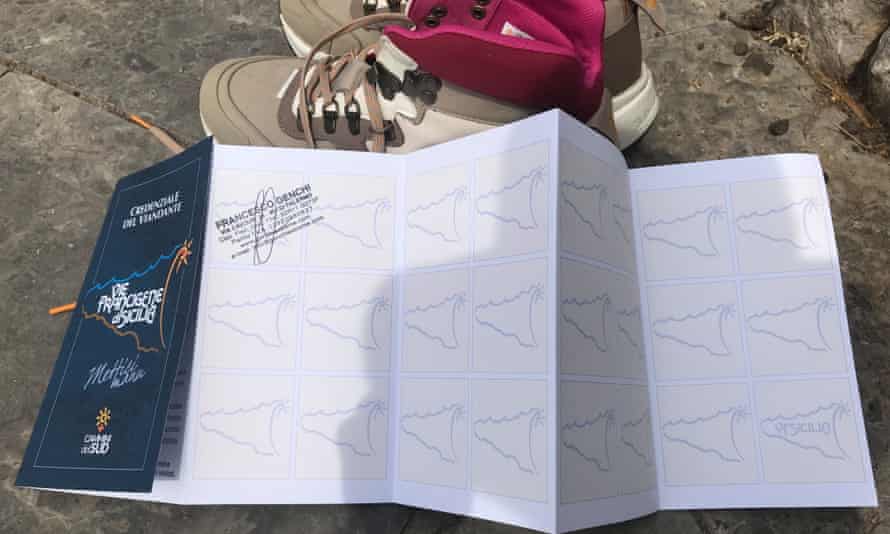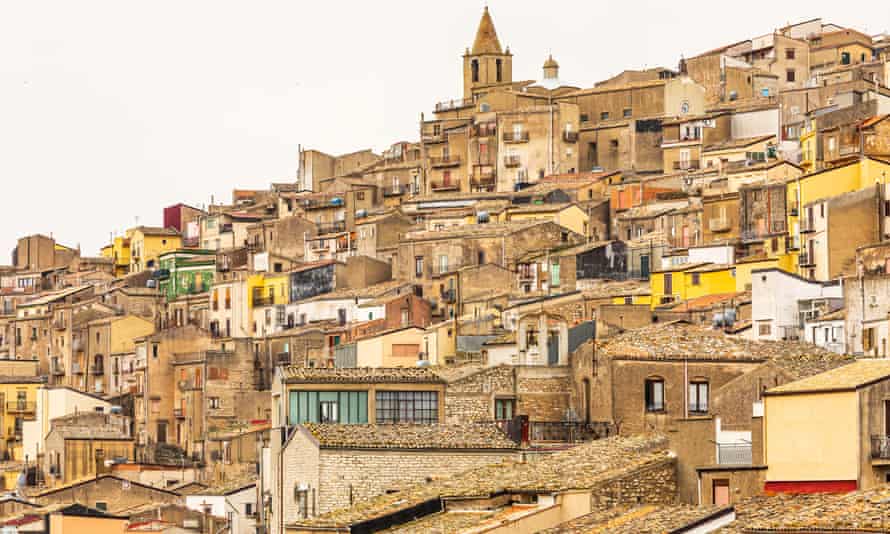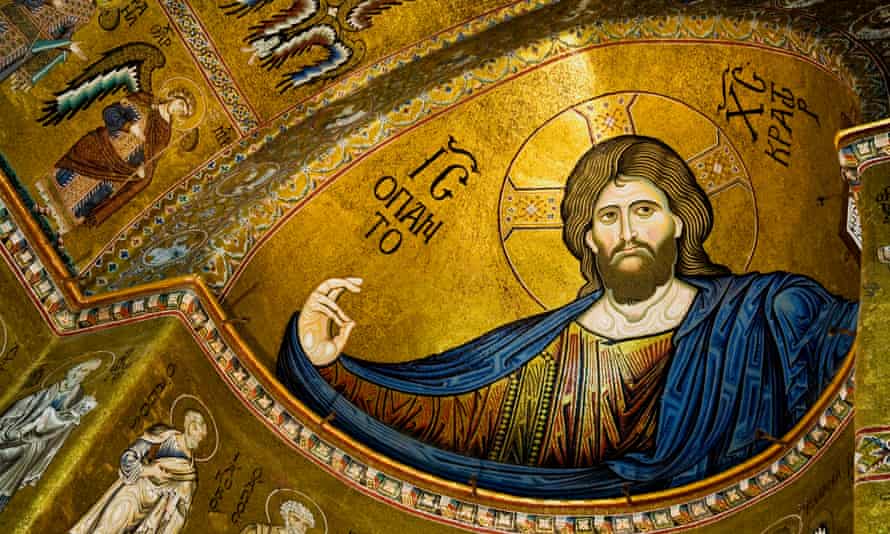“Sola?” “Si, sola.” Wherever I went, I was asked the same question: are you alone? When I replied in the affirmative, people were shocked and disapproving. Lone female travellers are still rare in Sicily’s hinterland, and those on foot are rarer still.
I was walking the Magna Via Francigena – the Great Road of the Frankish Knights – a nine-day, 116-mile coast-to-coast pilgrimage from Palermo, the Sicilian capital in the north, to Agrigento in the south. The route, which follows ancient drovers’ paths, became a pilgrimage in 2017 and is little known outside Italy. It seemed the ideal crowd-free alternative to Spain’s Camino de Santiago.
After a few days in Palermo, I collected my “pilgrim’s passport” and received my first stamp at the cathedral. Pilgrims then get a stamp after each of the nine stages – and a certificate if they walk at least 100km.

The first 7km is a dull trudge through Palermo’s suburbs and the invaluable website viefrancigenedisicilia.it recommends taking the bus to the nearby hill town of Monreale, which I did, spending the night there and starting the pilgrimage proper in the morning.
I was so glad I did. Of all Sicily’s glorious cathedrals, Monreale’s is surely the most magnificent, every inch resplendent with mosaicked bible scenes. At aperitivo time, when all the day trippers had returned to Palermo, I had the terrace of Fuori Orario trattoria to myself, watching the capital light up in the distance.

I stayed in a charming apartment next to the cathedral for just €25. The Magna Via Francigena website lists discounted accommodation for pilgrims, from donation-only shared dorms to fancy hotels at fleabag prices.
Finally, it was time to start walking. I had installed the maps.me app and downloaded the route to my phone. After an initial struggle to find the path (down a flight of steps, it turned out), navigation was plain sailing. I barely needed the map because the route was so well signposted: little stencilled pilgrim figures, Magna Via Francigena stickers, a splash of red and white paint. Whenever the path forked, a red arrow pointed the way, with a red “X” barring the wrong turn. It was like being on a treasure hunt.
I pounded paved roads through the Oreto valley until the village of Altofonte, where I stopped to refill my two water bottles. It is essential to use the public water fountains – in September, temperatures were still 30C-plus; my hands would swell up when I hadn’t been drinking enough.
From here, the terrain became wilder. I felt elated when I reached Santa Cristina Gela, the end of the first stage. The 20km walk had been easy enough and my rucksack was bearable. I had barely seen another soul along the route itself, and it felt completely safe. Whenever I reached a village, the people (mostly elderly men) I passed were happy to chat, despite my lack of Italian.
That night I stayed in the same apartment as two Italian pilgrims, Stefano and Filippo. It was nice to have company for dinner at the cheap and cheerful Picasso Ristopub. Stefano was worried by the weather forecast, but I figured I was more used to rain than a Neapolitan.
It rained all night. The next morning was dry, however, and I set off early. The route was off-road, climbing through farmland and forest to the Sanctuary of Tagliavia. The rain resumed as I left the church, and got heavier and heavier until I was no longer walking up a hillside but clambering up a waterfall.

After nine hours of walking, Corleone was a little disappointing. Its mafia museum was closed, as were most of the restaurants (on a Saturday, of all days), and the hotel charged me €50 instead of the €30 on the Magna Via Francigena website.
I was glad to move on in the morning – until I actually started moving. It was a steep climb out of town, my knee hurt and my new boots were starting to rub (I know, rookie error). Eventually I reached Prizzi’s lake, only to find the town itself looming above me: the final couple of miles felt practically vertical. It was a consolation to discover a fairytale place, with stepped and cobbled streets, and flower-bedecked houses. I pushed on to a panoramic viewpoint and my jaw dropped. A viewing platform jutted out over the precipitous drop, and the whole of Sicily seemed to stretch out below.
On the 25km walk from Prizzi to Castronovo, I was greeted by yet another elderly gentleman wanting to know if I was alone. I braced myself, but he smiled and held up a clenched fist: “Forte. Donna forte [strong woman].” From then on, whenever the going got tough, I repeated his mantra. Today’s path went through two shady forest areas, the Monte Carcaci nature reserve and Santa Caterina, and past an abandoned village.
I shared an apartment with Stefano and Filippo again in Castronovo. Our host Francesca took us on a tour of the town. Bar Gattuso on the main square, looked deserted but a table was quickly laid in the middle of the piazza, and soon we were eating arancini, caponata, local sausages and a host of other Sicilian delicacies. The best table in Castronovo, and only €20 a head for pilgrims.
The next day, the three of us walked together. It was less meditative but more fun, with stops to pick fruit, explore caves and take selfies. We foraged for prickly pears and figs, then passed a vineyard where an old man, Mario, was tending the vines. He invited us to pick some grapes, and brewed the strongest coffee I’ve ever tasted. It turned out I was staying with his son-in-law Walter at my next stop – central Sicily is a small world.

I parted company with the boys soon after. They were on a strict schedule but I had planned a couple of easy days, guessing that I might be glad of a rest. I was right: my blisters were killing me. My first stop was lovely Equiturismo San Lorenzo, where I had a tiny stone cottage all to myself, and complete peace and quiet.
I walked through the lively twin towns of Cammarata and San Giovanni Gemini and an hour down the road to my next stop, Casale Margherita, a turismo rurale. Here I had the luxury of an afternoon by the swimming pool. Another short walk the next day took me to Tenuta Lanza “Il Mulino”, an agriturismo in an orange grove. The hotel was closed, but Giuseppe, the laid-back owner, was happy to let a pilgrim stay.
The next day I walked through an arid land with patches of charred ground from the summer’s wildfires, some of it still smouldering. When I reached my destination, the fortress town of Sutera, I joined a guided walk to the top of Mount San Paolino, where we rang the huge old church bell and gazed across the island all the way to Mount Etna.
From Sutera, I walked to Racalmuto, the picturesque birthplace of the writer Leonardo Sciascia, then pushed on a little further to bustling Grotte, where I stayed in a fantastic palazzo on the main square, in a boutique hotel-style room with a balcony, for €20 – including morning coffee and ricotta-filled doughnut at the bar downstairs.

The penultimate day, to Joppolo Giancaxio, had the last real ascent of the trail. At the top, I looked back towards Palermo, hidden behind impossibly distant peaks, and onwards to Agrigento, almost within touching distance. It was hard to believe I had walked so far. When I reached Joppolo, my host Luana invited me to hang out with her and her friends at the adventure park. We drank gin and tonics, fired up the barbecue, and shared thick steaks of Sicilian cinisara beef and wedges of Joppolo yellow melon.
I had mixed feelings on the last day of the walk: sadness that the journey was almost over; relief that I would soon be able to unlace those bloody boots; excitement about reaching my destination.
The official end point is the cathedral of Agrigento and its museum, where I collected my final stamp and certificate. But it wasn’t until I visited the Valley of the Temples, just beyond the city, that I felt my pilgrimage was complete. I had reached one of the most astonishing archaeological sites in the world on foot – and I had done it alone.
Stay connected with us on social media platform for instant update click here to join our Twitter, & Facebook
We are now on Telegram. Click here to join our channel (@TechiUpdate) and stay updated with the latest Technology headlines.
For all the latest Lifestyle News Click Here
